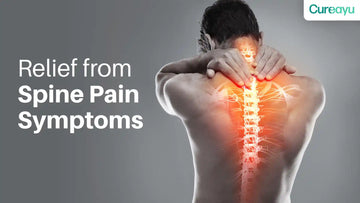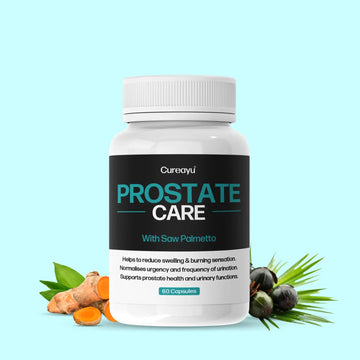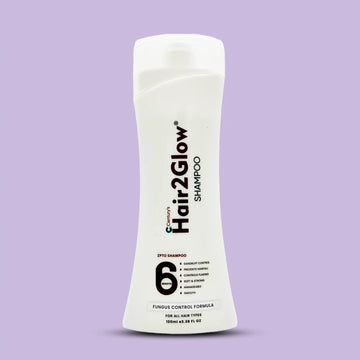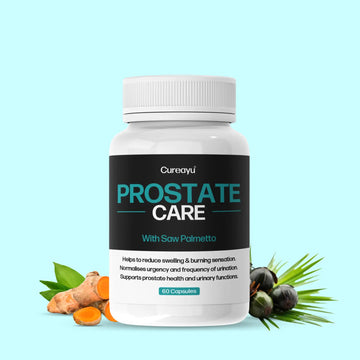Spine pain is one of the most common health concerns today, affecting people of all ages due to poor posture, sedentary lifestyles, and long working hours. Whether it's a persistent ache or sharp shooting pain, spine discomfort can make everyday tasks difficult, disrupting your focus, sleep, and mobility.
Understanding the symptoms and root causes of spine pain is essential for managing it effectively. From identifying the type and cause of your pain to exploring natural and Ayurvedic solutions, this blog is your comprehensive guide to achieving lasting relief and supporting your spine’s long-term health.
Also Read: Everything You Need to Know About Back Pain Causes, Symptoms, and Treatments
What Is Spine Pain?
Spine pain refers to any discomfort originating from the spinal region, which spans from the neck (cervical spine) down to the tailbone (sacral spine). This discomfort may arise from muscles, nerves, joints, or discs, and it can be localized or radiate to other parts of the body.
The spine is a complex structure that supports our posture and allows flexible movement. Damage or inflammation in any part of the spinal structure—vertebrae, discs, ligaments, or nerves—can result in varying degrees of pain, stiffness, or immobility. Understanding the origin of your pain is the first step toward effective spine pain treatment.
Spine Pain Symptoms
Recognizing spine pain symptoms early can help in managing the condition before it worsens. Here are some common symptoms:
-
Localized Pain: Pain that remains in a specific area of the spine. It can be sharp, dull, or throbbing, often worsened by movement or prolonged inactivity.
-
Radiating Pain: Pain that travels from the spine to other areas like the arms or legs, often indicating nerve involvement or disc issues.
-
Numbness or Tingling: A “pins and needles” sensation usually points to nerve compression or irritation in the spine.
-
Muscle Weakness: Reduced strength, especially in the limbs, can result from nerve impingement or spinal cord problems.
-
Limited Flexibility: Difficulty bending or twisting the back is often a symptom of spinal inflammation or injury.
-
Stiffness: Especially after sleeping or sitting for extended periods, stiffness can signal inflammation in spinal joints or muscles.
Also Read: Understanding the Many Types of Pain: A Comprehensive Guide for Choosing the Right Treatment
Types of Spine Pain
Cervical Spine Pain
Cervical spine pain occurs in the neck area and is often the result of prolonged screen use, poor posture, or sleeping in an awkward position. It can cause stiffness, headaches, and restricted neck movement. In more severe cases, it may radiate to the shoulders and arms, indicating nerve involvement and disc-related issues.
Thoracic Spine Pain
Thoracic spine pain impacts the upper and middle part of the back, often between the shoulder blades. This pain is less common but may be caused by poor posture, scoliosis, or repetitive strain. It can also be related to conditions like herniated discs or muscular imbalances in the upper back, and may worsen with deep breaths or twisting motions.
Lumbar Spine Pain
Lumbar pain affects the lower back and is one of the most frequent complaints among adults. It can result from improper lifting techniques, prolonged sitting, or underlying conditions such as herniated discs or spinal stenosis. This pain can severely affect mobility and may radiate down the legs, interfering with daily activities and quality of life.
Sacral Spine Pain
Sacral spine pain is located at the bottom of the spine, near the pelvis. It’s often caused by dysfunction of the sacroiliac joints or issues related to pregnancy and childbirth. The pain can radiate to the hips and thighs, especially when sitting or standing for extended periods, and may feel like a dull ache or deep-seated soreness.
Spine Pain Causes
There are many spine pain reasons. Some of the most common spine pain causes include:
-
Poor Posture: Slouching while sitting or standing increases stress on the spine, leading to chronic discomfort.
-
Muscle Strain: Lifting heavy objects improperly or sudden movements can strain spinal muscles and ligaments.
-
Degenerative Disc Disease: With age, spinal discs lose hydration and elasticity, causing pain and stiffness.
-
Herniated or Bulging Discs: These conditions occur when spinal discs press on nearby nerves, causing intense pain or numbness.
-
Injury or Trauma: Accidents, falls, or sports injuries can lead to fractures or ligament damage.
-
Sedentary Lifestyle: Inactivity weakens core and back muscles, putting extra pressure on the spine.
-
Obesity: Excess body weight increases the load on the spine, accelerating wear and tear.
When to See a Doctor
While mild spine pain often resolves with rest and care, medical help is necessary if:
-
Pain Persists Beyond a Few Weeks: Chronic discomfort could indicate a more serious issue needing professional treatment.
-
Pain Radiates Down Arms or Legs: Could suggest nerve compression, such as in sciatica or cervical radiculopathy.
-
Weakness or Numbness: Loss of strength or sensation is a red flag for spinal nerve damage.
-
Loss of Bladder or Bowel Control: This could indicate cauda equina syndrome, a medical emergency.
-
Pain After Injury or Accident: Immediate attention is crucial to rule out fractures or disc herniation.
How To Get Relief With Spine Pain Symptoms Naturally
1. Correct Your Posture
Maintaining the correct posture is essential for reducing spine strain and avoiding long-term discomfort. Use ergonomic chairs that support the natural curve of your spine and avoid slouching while working or watching screens. Even small improvements in posture can significantly reduce daily spine stress and help prevent long-term damage.
2. Stay Active with Low-Impact Exercises
Regular physical activity strengthens the muscles that support the spine, increases flexibility, and improves circulation. Activities like walking, swimming, and yoga are gentle on the back and help reduce stiffness and inflammation. A consistent routine also enhances your core strength, which is crucial for spine health.
3. Use Heat and Cold Therapy
Applying a cold pack during the first 48 hours of spine pain helps reduce inflammation and swelling. After that, using a heating pad can soothe sore muscles, boost blood flow, and promote healing. For chronic pain, alternating between hot and cold therapy may offer the best results and relieve stiffness.
4. Manage Stress
Stress can worsen muscle tension, particularly in the back and neck, contributing to spine pain. Techniques like meditation, deep breathing exercises, and gentle stretching can help calm the nervous system. Reducing stress can also help improve your sleep and overall body recovery process.
Ayurvedic herbs like turmeric, ginger, and ashwagandha are known for their anti-inflammatory and pain-relieving effects. Cureayu SpineSafe® Capsules combine these herbs with others like Guggulu, Rasna, and Nirgundi to naturally support joint flexibility, reduce swelling, and enhance spinal strength. This supplement is a gentle, long-term approach to spine wellness without the side effects of conventional medication.
Final Words
Spine pain can be physically and emotionally draining, but with the right knowledge and approach, it’s possible to regain comfort and mobility naturally. Start by identifying the type and cause of your pain, then take simple yet effective steps like improving posture, staying active, and incorporating Ayurvedic solutions into your daily routine.
Cureayu SpineSafe® Capsules can be an excellent addition to your spine health regimen. Combined with lifestyle changes and a proactive mindset, you can manage spine pain symptoms effectively and enjoy a healthier, more flexible life.
FAQs
1. What are the symptoms of a spine problem?
Common symptoms include localized pain, numbness, stiffness, muscle weakness, and radiating pain to the limbs.
2. What is the main cause of spinal pain?
Spinal pain is often caused by poor posture, muscle strain, degenerative disc disease, or nerve compression.
3. Is spine pain serious?
While many cases are mild, chronic or severe spine pain may indicate nerve or structural issues and should be evaluated by a doctor.
4. How to relieve spine pain?
Spine pain relief includes posture correction, regular low-impact exercise, natural supplements, and in some cases, professional medical care.











